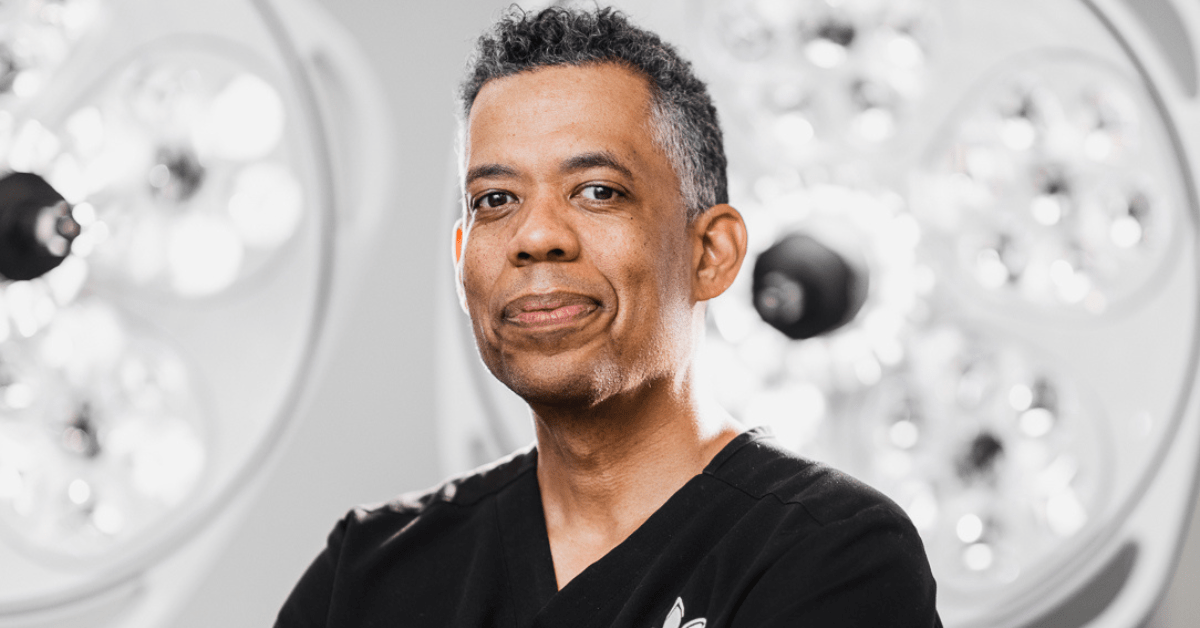Get to know board-certified plastic and reconstructive surgeon, Dr. Steven Williams
Share

- Who is Dr. Steven Williams? (This is a time for us to get to know you and your passion behind what you do)
I’m a board-certified plastic surgeon practicing in Northern California. I went to Dartmouth College for my undergraduate education and then attended Yale University for medical school and stayed at Yale University for my plastic surgery residency, where I trained to perform reconstructive and cosmetic plastic surgery procedures. I was the first African American person to graduate from Yale’s plastic surgery program. I’ve been deeply involved in our professional organization, the American Society of Plastic Surgeons (ASPS), for decades. I have served as the chair of multiple committees including the Diversity, Equity and Inclusion Committee as well as the Vice President of Aesthetic Surgery and I currently serve as the Vice President of Membership.
From a cosmetic perspective, I have a passion for empowering people by helping them align physical appearance with internal expectations. Additionally, hand surgery, breast reconstruction, reconstruction for congenital issues as well as cancer and trauma reconstruction are all things that plastic surgeons do regularly to restore form and function.

- Plastic Surgery gets a bad reputation, can you tell us how it can be a positive procedure?
Plastic surgery has become substantially more popular as it reaches farther and farther into the mainstream. It’s a topic that people openly discuss and view as a viable way to create personal change. It’s an evolution of people wanting self-empowerment. It’s people being able to change the way they look in a way that suits them. It’s self-expression, and many patients find it very fulfilling. When it’s less positive is when patients try to change things about themselves for the wrong reason. When someone has plastic surgery for the wrong reasons, most of the time, they wind up disappointed. Fortunately, as more people discuss the risks/benefits and alternatives to plastic surgery and as more patients share their stories, and as our techniques and tools get better and better, more patients are finding the appropriate procedure (if any) for them. It’s our job as board-certified plastic surgeons to help people with these options.
- What are some things people don’t understand about plastic and reconstructive surgery?
I think the first thing that people sometimes struggle to understand is that plastic surgery deals with the entire person and includes both cosmetic and reconstructive surgery. Plastic surgeons are trained to operate on almost every part of your body and deal with complex medical problems that can occur from trauma or cancer. It’s easy to think about the things that are in the news like Brazilian Butt Lifts or Botox, but there’s a lot more to plastic surgery.
The other thing that’s of the most importance is understanding the difference between a board-certified plastic surgeon and another type of doctor who may offer similar types of procedures, or may call themselves a cosmetic surgeon or an aesthetic doctor. The training and continuing medical education the plastic surgeons go through makes them outstanding at managing these types of medical issues. Patients do better when procedures are performed by the people who are trained to perform them. There is a great deal of confusion because sometimes people who pretend to be plastic surgeons market themselves in a way to convince patients to trust them with their very lives.
- You are working on bringing more diversity and inclusion within ASPS, why is that important?
Professional societies have a role in providing resources to membership with clear messaging and support to patient populations and advocacy at state, local and federal government levels. As ASPS works to further that mission, it’s important that diversity and inclusion are part of those considerations.

- BBLs and the procedure have gained a lot of media attention due to people finding alternative methods to getting them. Please tell us the cultural impact of BBLs and some of the myths you are refuting.
A BBL is a surgical procedure where we transfer fat from one part of the body to another. Autologous fat grafting (another term for BBL) is one of the most reliable and safe methods for increasing volume in the hips and buttocks. Other techniques include using hyaluronic filler or other medical cosmetic injectables to improve volume. The challenge with other techniques is that the volume required makes most medical injectables too expensive to create substantial change. The other alternative to buttock volume improvement is buttock implants. I personally don’t perform this procedure because I feel the long-term complications aren’t worth the short term improvement in shape and that fat grafting tends to be a much more powerful technique over the long term.
It’s important for patients to understand that these are surgical procedures that should be done in a controlled medical setting, usually the operating room. And these procedures should be performed by board-certified plastic surgeons who have experience in these techniques.
- You advocate for minorities and marginalized communities to be heard and receive proper treatment, why is that? What’s happening in the industry that makes them feel unheard?
It’s clear that race, gender identity, age, sexual orientation and other factors all affect people’s ability to find quality medical care. For example, the United States Department of Health and Human Services and the Center for Disease Control, in 2020, reported that African Americans have the highest mortality rate for all cancers combined compared to any other racial or ethnic group. And that there are 11 infant deaths per 1000 live births among Black Americans, which is almost twice the national average.
While those are appalling general healthcare statistics, in the realm of things that plastic surgeons manage the data isn’t any better. The American Cancer Society notes that Black women are 40% more likely to die of breast cancer than white women. And that about a third of African American women report experiencing racial discrimination at a health provider visit. If they survive breast cancer, African American women are offered breast reconstruction options at a substantially lower rate than the rest of the population.

The causes of these very sad facts are multifactorial and take their route in historical barriers, implicit bias, and socio-economic factors.
As physicians it’s our job to care for patients, all of our patients. It’s encouraging that the media, the government, and academic institutions are slowly beginning to address these health disparities, but clearly more rapid action needs to take place.


